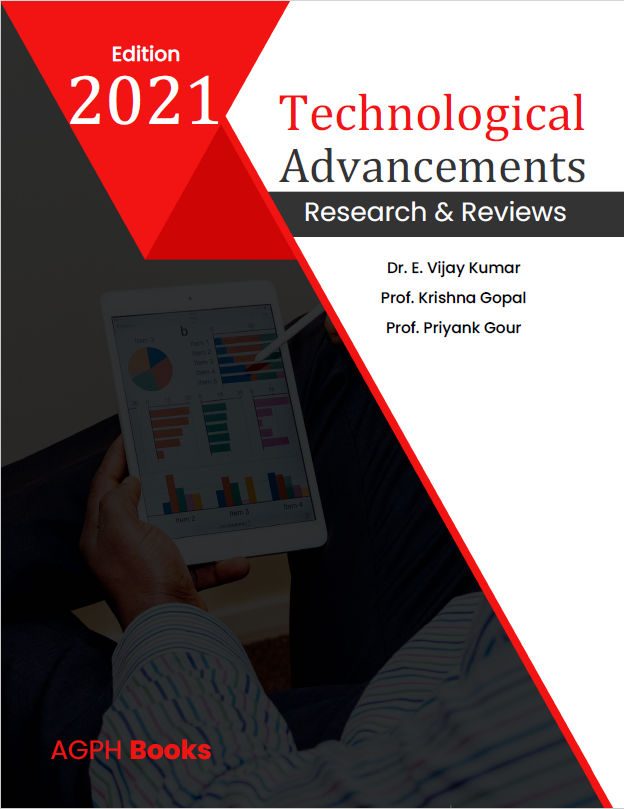To study the thermal performance of Shell and Tube Heat Exchanger by Using Different TubesMaterials
Keywords:
Heat Exchanger, Tube and shell heat exchanger, ANSYS, CFDAbstract
In this work, a brief research background is provided over the tube and shell heat exchangers. Heat exchangers are very extensively brought in use for applications like heat transfer in the industries. Tube and shell heat exchanger are among such heat exchangers and provides more areas for transferring heat among the two fluids in comparison with other kinds of heat exchangers. “Tube heat exchanger and shell heat exchanger” are very extensively brought in use for applications like liquid to liquid heat transfer constituting of high-density working flute. The focus of this study is over the utilization of tube and shell heat exchangers with different materials: copper, steel and aluminium. Further with the help of ANSYS, a computational model was implemented for the same heat exchanger. This study has conducted investigations over the tube and shell heat exchanger with assessment off exchanger’s effectiveness and temperature. Steel, copper and aluminum showed effectiveness of 0.738, 0.748 and 0.747 respectively. This result showed that copper has the maximum effectiveness and steel has the lowest effectiveness.
References
[1] R. Du, D. Jiang, and Y. Wang, "Numerical investigation of the effect of nanoparticle diameter and sphericity on the thermal performance of geothermal heat exchanger using nanofluid as heat transfer fluid," Energies, vol. 13, no. 7, 2020, https://doi.org/10.3390/en13071653
[2] A. K. Sunil and R. Kumar, "CFD analysis of thermal performance of microchannel nanofluid flow at different reynolds numbers," Songklanakarin J. Sci. Technol., vol. 41, no. 1, pp. 109-116, 2019, doi: 10.14456/sjst-psu.2019.13.
[3] M. S. Krishnakanth, C. T. A. Aravind, and M. A. Ashok, "Numerical Investigation of Concentric Tube Heat Exchanger using a Nanofluid," Int. J. Eng. Res. Technol., vol. 8, no. 06, pp. 1339-1344, 2019.
[4] G. H. KISHORKUMAR, D. M. MEHTA, and A. P. J. SHAH, "EXPERIMENTAL AND NUMERICAL STUDY OF SHELL AND TUBE HEAT EXCHANGER BY VARYING THE INNER RADII OF CORRUGATED TUBE," Int. J. Tech. Innov. Mod. Eng. Sci., vol. 5, no. 04, pp. 629-640,2019.
[5] K. P. B, B. U. Lakshmi, and A. H. Krishna, "Numerical Simulation of Shell and Tube Heat Exchanger using Ansys Fluent," Int. J. Innov. Technol. Explor. Eng., vol. 8, no. 11S2, pp. 543-545, 2019, https://doi.org/10.35940/ijitee.K1093.09811S219
[6] K. Pavani and V. R. Kumar, "NUMERICAL INVESTIGATIONS FOR PERFORMANCE IMPROVEMENT IN SHELL AND TUBE HEAT EXCHANGERS USING NANO FLUIDS," Int. J. Eng. Sci. Res. Technol., vol. 7, no. 7, pp. 1-16, 2018.
[7] S. T. Santhakumar, B.Meganathan, and M.Sanjeevkumar, "Comparsion and Cfd Analysis of Heatexchanger With Nanofluid for Increasing Effectiveness With and With Out Baffles," Int. J. Pure Appl. Math., vol. 118, no. 24, pp. 1-11, 2018. https://doi.org/10.1109/MIAS.2017.2758007
[8] J. V. Kumar, M. V. S. P. Kumar, J. S. Kumar, and T. N. V. A. Kumar, "MODIFIED DESIG OF SHELL AND TUBE HEAT EXCHANGER AND CFD ANALYSIS," Int. J. Curr. Eng. Sci. Res., vol. 5, no. 4, pp. 39-44, 2018.https://doi.org/10.1542/gr.39-4-44
[9] H. V. Rao, J. Bala, and B. Rao, "Fluent Analysis of Shell and Tube Heat Exchanger with Different Materials and Fluids," Int. J. Mag. Eng. Technol. Manag. Res., vol. 5, no. 2, pp. 2-3, 2018.
[10] K. K. Dew and P. Shrivastava, "Cfd Analysis of Double Tube Heat Exchanger Using Different Nanofluid," Int. J. Res. Trends Innov., vol. 3, no. 7, pp. 146-155, 2018.
[11] U. Sankararao, N. Ramesh, P. P. D. Rao, and D. B. Rao, "Enhancement of heat transfer in shell and tube heat exchanger by using nano fluid," Int. J. Mech. Prod. Eng. Res. Dev., vol. 7, no. 5, pp. 191-198, 2017, https://doi.org/10.24247/ijmperdoct201720
[12] H. Yerrennagoudaru, B. V. Prasad, and S. V. Kumar, "Nano Fluids for Heat Exchanger," Int. J. Eng. Sci. Innov. Technol., vol. 5, no. 4, pp. 82-89, 2016. Design And Analysis of Shell and Tube Heat Exchanger Using Different Tubes Materials




